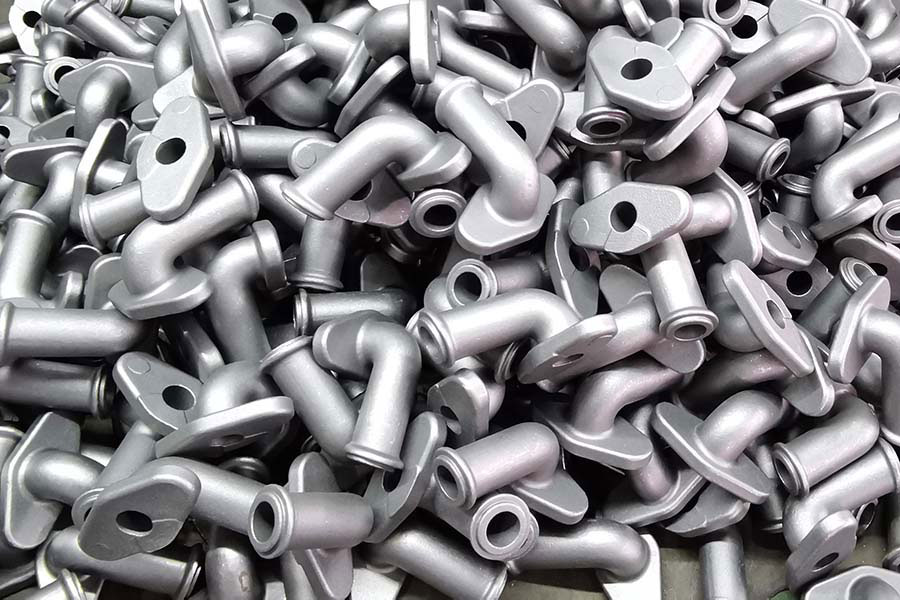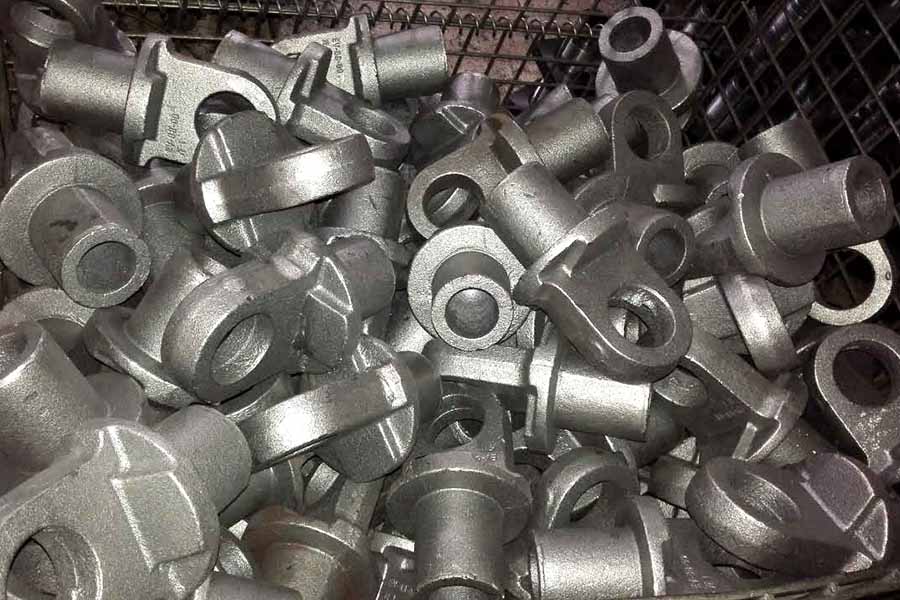According to the different binders for shell building, the investment casting could be divided into silica sol binder investment casting, water glass binder investment casting and the investment casting with their mixtures as binder materials. Silica sol is a typical water-based binder with a silicic acid colloid structure. It is a polymer colloidal solution in which highly dispersed silica particles are soluble in water. The colloidal particles are spherical and have a diameter of 6-100 nm. The process of investment casting to make the shell is the process of gelling. There are many factors influencing gelation, mainly electrolyte, pH, sol concentration and temperature. There are many types of commercial silica sols, and the most used is alkaline silica sol with a silica content of 30%. In order to overcome the shortcomings of the long shell-making cycle of the silica sol shell, a quick-drying silica sol has been developed in recent years. The process of making silica sol shell is relatively simple. Each process has three processes: coating, sanding, and drying. Each process is repeated many times to obtain a multilayer shell of the required thickness.
In the silica sol shell making process, drying is the most critical process. Through drying, the water is volatilized, the silica sol gels, and the refractory particles are firmly bonded together, thereby obtaining a high-strength shell. This is a good preparation for the subsequent casting. The casting obtained by the silica sol shell making process has low surface roughness, high dimensional accuracy and long shell making cycle. This process is widely used in casting high-temperature heat-resistant alloys, heat-resistant steels, stainless steels, carbon steels, low alloys, aluminum alloys and copper alloys.
The silica sol precision lost wax investment casting process is suitable for repeatable production of net shape components from a variety of different metals and high performance alloys. Although generally used for small castings, this process has been used to produce complete aircraft door frames, with steel castings of up to 500 kgs and aluminium castings of up to 50 kgs. Compared to other casting processes such as die casting or sand casting, it can be an expensive process. However, the components that can be produced using investment casting can incorporate intricate contours, and in most cases the components are cast near net shape, so require little or no rework once cast.
According to the level of carbon content, carbon steel for casting is generally divided into low carbon steel, medium carbon steel and high carbon steel. The cast carbon steels of all countries in the world are generally classified according to their strength, and corresponding grades are formulated.
Regarding the chemical composition of carbon steel, except for phosphorus and sulfur, there are no restrictions or only upper limits on other chemical elements. Under the above premise, the chemical composition of cast carbon steel is determined by the foundry according to the required mechanical properties.
The heat treatment methods of carbon steel castings are usually annealing, normalizing or normalizing + tempering. For some high carbon steel castings, quenching and tempering can also be used, that is, quenching + high temperature tempering, so as to improve the comprehensive mechanical properties of carbon steel castings. Small carbon steel castings can be directly quenched and tempered from the as-cast state. For large-scale or complex-shaped carbon steel castings, it is appropriate to perform quenching and tempering treatment after normalizing treatment.
In the field of casting and metallurgical industry, ferrous metals mean the metals and their alloys which contain iron. The ferrous metal include steel and pig iron and the foundries usually divide them into two big categories: cast iron (grey cast iron, ductile cast iron, malleable cast iron, vermicular graphite cast iron etc.) and cast steel (cast carbon steel, cast alloy steel, stainless steel etc). By lost foam casting process, RMC Casting Foundry could pour grey iron, ductile iron, alloy steel and carbon steel.
| Casting Process | Materials | |
| Sand Casting | Green Sand Casting | Grey Iron, Ductile Iron, Malleable Iron, Stainless Steel, Carbon Steel, Steel Alloys, Aluminum Alloy, Brass, etc |
| Furan Resin Sand Casting | ||
| Shell Moling Casting | ||
| Cold Harden Resin Sand Casting | ||
| Investment Casting (Lost Wax Casting) | Water glass Investment Casting | Carbon Steel, Steel Alloys, Stainless Steel, Brass, Gray Iron, Ductile Iron, Brass, Bronze, Aluminium Alloy |
| Silica Sol Investment Casting | ||
| Lost Foam Casting | Ductile Iron GGG 40 to GGG 80 / Grey Iron | |
| ASTM 60-40-18 / 65-45-12 / 80-55-06 / 100-70-03 | ||
| Carbon steel, Hi-Mn Alloy Steel, Hi-Cr Alloy Steel | ||
| Austempering Ductile Iron | ||
| Heat Resistant Steel / Wear Resistant Steel | ||
| Vacuum Casting (V Process Casting) | Ductile iron GGG 40 to GGG 80 / Grey Iron | |
| ASTM 60-40-18 / 65-45-12 / 80-55-06 / 100-70-03 | ||
| Carbon steel, Hi-Mn steel, Hi-Cr steel | ||
| Austempering Ductile Iron | ||
| Heat resistant steel / Wear resistant steel / Stainless Steel | ||
| Surface Treatment Services | Powder Coating, Anodization, Electrophotesis, Chrome Plating, Painting, Sand blasting, Nickel Plating, Zinc Plating, Blacking, Polishing, Bluing, Geormet, Zintek, etc. | |
| CNC Precision Machining Services | Lathing, Milling, Turning, Honing, Drilling, Boring, Tapping, Wire Electrode Cutting, Grinding...etc. | |
| Inspection and Quality Control | Spectrum Analyzer, CMM, Hardness Tester, Tensile Strength Tester, Yild Strentgh Testor, Sealing Pressure Tester, Carbon Sulfur Analyzer, Metallurgical Microscopy, Press Force Tester...etc. | |











